Spin Fishing For Steelhead: 5 Most Effective Methods Used By Guides
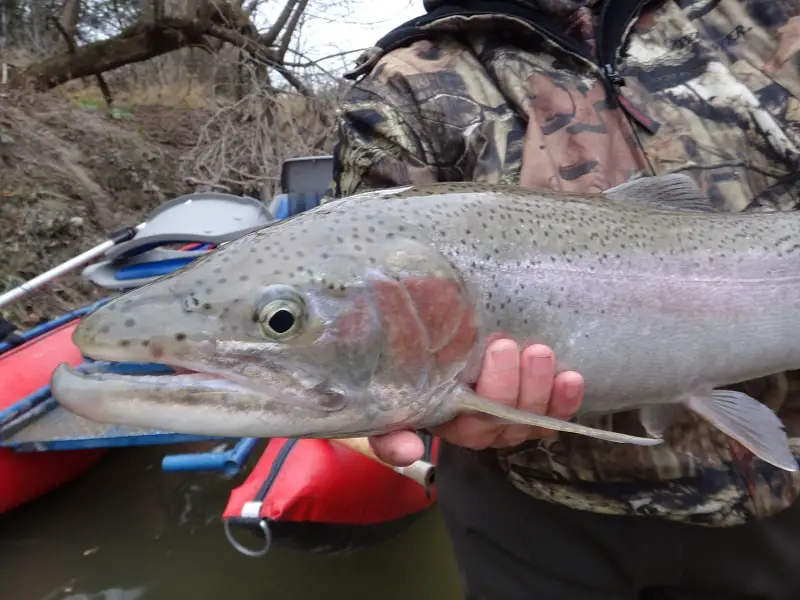
In this article, I will discuss the best gear and the best methods, as well as some tips that I use when guiding clients on steelhead trips using spinning reels.
Spin fishing for steelhead can mean casting lures or fishing with baits using a few different methods. The spinning reel provides anglers with a good drag system and lots of line. The spinning reel is also easy to use for most anglers.
River guides tend to catch a lot more steelhead than most anglers and there are things that river guides do that improve the effectiveness of spin fishing. These are not a secret, and they are not hard to learn. Keep reading to find out more.
Methods For Spin Fishing For Steelhead
Anglers that spin fish for steelhead can use methods like casting lures, jig fishing for steelhead, bottom bouncing for steelhead, and plunking for steelhead. Some spin fishing methods for steelhead are much more effective at catching steelhead than others.
I will also discuss the best rods and spinning reels for fishing for steelhead.
Spinning Reels For Steelhead
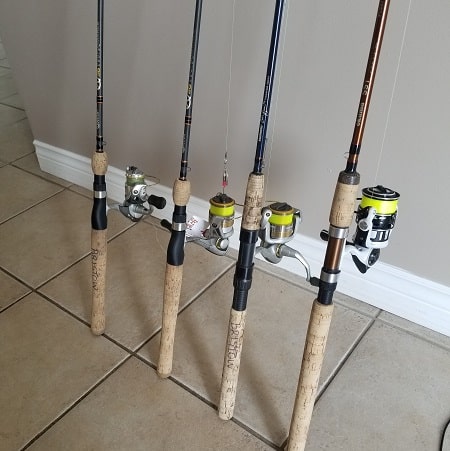
What makes spin fishing unique is the spinning reel itself.
With the spinning reel, you can do all of the effective methods that are used in rivers as well as other methods that are used in boats, like trolling for steelhead.
There are a few things to consider when choosing the right spinning reel for fish like steelhead that run fast and fight harder than most fish.
The best spinning reels for steelhead will have a good smooth drag system, it must have good strong gears that won’t get stripped, and hold enough line for those long runs that steelhead is known for.
When I spin fish for steelhead, I want to be sure the reel that can handle the big hard-fighting steelhead.
One of the primary advantages of using a spinning reel for steelhead fishing is that they are easy to cast and most anglers already have experience with them.
Another advantage that I see and appreciate as a guide is that they have a good smooth drag system, and once it is set up properly, it does all the work for the angler when fighting a fish and it maintains nice steady pressure so my clients are less likely to lose their big fish.
There are some reels that just do not work well for steelhead and I have seen clients and other anglers lose big steelhead because of these bad spinning reels. The thing is that most anglers don’t see what I see so they think any spinning reel will do the job, which is wrong.
Spinning reels for steelhead don’t have to be expensive to work well. There are 4 or 5 reels that I recommend to my clients because these are the reels that have been proven to work for big steelhead, plus they are durable, and anglers love using them. Some of these reels are under $150.00.
Best Line For Steelhead Fishing
When it comes to the line for your steelhead spinning reels, you have a few options, and it will depend on the methods that you use.
The most common line for steelhead fishing with spinning reels is a 10-pound monofilament line like Sufix Elite, which is strong and thin, yet still supple, and it’s good for multipurpose fishing. There are times when an 8-pound line or 12-pound line is even better.
The reason I like the Sufix Elite line is that I have extensively tested it when casting lures, when float fishing, when bottom bouncing or drift fishing, and when plunking. It’s also recommended by other river guides and river anglers who fish for steelhead. It works well on baitcasting reels and Centerpin reels.
But monofilament is not always the best line. Other options include braided line, which is often best for lure fishing but is also good with float fishing, drift fishing, and bottom bouncing.
Another option is fluorocarbon line, which is good for lure fishing, drift fishing, bottom bouncing, and plunking, but is not good for float fishing.
Other good lines include:
- Sufix Promix Fishing Line – 8 and 12 pounds. A cheaper line that river anglers like.
- PowerPro Braided Spectra Fiber Line – 20 pound – I like Braided lines for fishing with lures, but they can be good when float fishing too.
- Berkley NanoFil Uni-Filament Line – 20-pounds – This is a good line when fishing with lures, and it seems to clear ice from the line better when fishing in the winter.
What Pound Line Is Best For Spin Fishing For Steelhead?
The best pound line for steelhead is 10 pounds. However, this is a general-purpose size. There are times when I will go down to 8 pounds, and other times I might go up to 14 pounds.
As a general rule of mine, I always recommend going with the lightest fishing line possible.
I find that lighter lines cast better, tangle less, and are more supple in cold water and cold air temperatures, especially when it’s below freezing. Lighter lines can also provide better action to your lures.
When it comes to float fishing for steelhead I recommend 8-pound line, however, I know some very good float anglers that go as light as 6 pounds around when fishing for great lakes steelhead.
Thin fishing lines are much lighter, which prevents line sag or line sink when you are float fishing, which is why I and other guys go as light as possible.
Now keep in mind that I primarily fish for Great Lakes steelhead, so when I go fish for West Coast steelhead or when fishing huge fast rivers, I will upsize to a 10 or 12-pound line.
Lighter lines are just all-around better lines to use, yet many anglers still use lines that are way too heavy.
Line Sizing Table For Steelhead
Pound Test | Diameter Size | Method | Size Of River | Area |
8 pound | 0.010 in. / 0.26mm | Float fishing / Bottom Bouncing | - small to medium / Under 80 feet wide - slow to medium current | - Great Lake Region |
10 pound | 0.011 in. / 0.28mm | - Float Fishing / Bottom Bouncing / Drift Fishing - Plunking | -Medium to Large rivers / under 150 feet wide - Medium to fast currents | -Great Lake Region - Small West coast rivers |
12 pound | 0.012 in. / 0.31mm | - Lure Fishing Great Lakes Rivers - West Coast Float Fishing, Drift Fishing and Plunking | - Small to Mid sized west coast rivers. - Very large and fast current great lakes rivers | - Great Lakes Region - West Coast |
14 to 15 pound | 0.013 in. / 0.33mm | - Lure Fishing Great Lakes and West Coast - West Coast Float Fishing and Drift Fishing | - Lure Fishing most sized rivers - Large Fast West Coast Rivers | West Coast |
16 to 17 pound | 0.015 in. / 0.37 mm | Lure Fishing | Medium To Large Rivers | West Coast |
What Pound Leader Is Best For Steelhead?
The best pound leader to use when fishing for steelhead is the 8 to 12-pound test, but the leader strength really depends on a few factors such as the size of the steelhead in your area, the method you use, clarity and speed of the river, and the size of the river.
Guide Tip: I always use a slightly lighter leader than my mainline, I never use a stronger leader than my mainline. Doing so risks losing your entire leader setup.
The fish can see the leader if it’s too thick!
Using too heavy a leader when using slower fishing methods such as float fishing or drift fishing is why some guys catch one fish a day when guys like me and my clients are using 8-pound leaders and are catching 10 steelhead a day.
When I’m fishing a small to medium-sized steelhead stream which can be 12 to 50 feet wide, a lighter leader of 8-pound is what I use because I know that I or my clients can walk the banks easily and chase the fish up or down the river if needed.
With such a light leader, I get all the benefits of the lighter line while still being able to land most steelhead. I probably land 95 percent of my steelhead on 8-pound test leader without breaking my leader or my mainline.
If my leader or mainline breaks, it’s often due to the line being old or some damage on the line. These small to mid-sized rivers are great with 8 and 10-pound mainline and 6 to 8 pound leaders. FYI – I upsize 2 to 4 pounds when fishing West Coast rivers.
The only time I would prefer a 10-pound line or leader on small rivers is if I need to upsize my leaders due to heavily wooded sections where I will need to apply more pressure to steer big steelhead away from logs and wood.
For larger rivers of 60 to hundreds of feet wide, and rivers with very fast flows, I would go with a 10 or 12-pound test line and leader.
FYI – A 10-pound leader is generally 2 to 6 pounds lighter than a 10-pound mainline based on the ratings on the labels. Therefore, using a 10-pound leader is Ok with a 10 pound mainline.
Pound Test | Diameter |
1.5 | .003in (.08mm) |
2 | .004in (.10mm) |
3 | .005in (.12mm) |
4 | .0055in (.13mm) |
6 | .007in (.18mm) |
8 | .008in (.20mm) |
10 | .009in (.22mm) |
12 | .010in (.25mm) |
Not Sure what leader size is best for steelhead, check out my page What Pound Test Leader Is Best For Steelhead? or if you want to see my float fishing leader setup, check out Steelhead Leaders: Best Float Leader And 2 Proven Setups.
Spinning Rods For Steelhead
I like longer rods when spin fishing but I will use and recommend a few different spinning rods for different methods.
For casting lures for steelhead I like rods in the 8 to 9-foot range. You could use a standard 7-foot rod for steelhead but if you are serious about fishing for steelhead and want to be able to catch as many as possible, there are many advantages to a longer spinning rod when fishing for steelhead.
The longer length of 8 to 9-foot spinning rods gives you longer casts with lighter lures such as spinners. The longer rod also helps you play the fish better and can keep your line higher and away from shallow rocks when a big fish runs far up or down the river. The long length can also help protect lighter leaders.
When float fishing for steelhead I like rods 11 to 14 feet long. Longer rods help with casts, they help with line control by keeping the line up off the water and with the mending of the line, and the longer rod acts like a giant shock absorber that will protect light leaders.
Lure Fishing With Spinning Reels For Steelhead
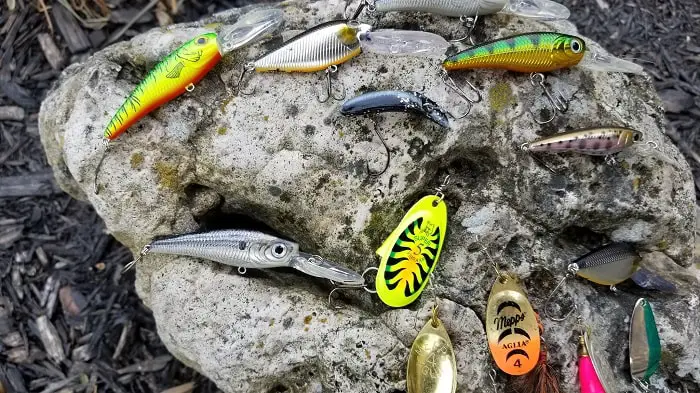
Lure fishing for steelhead can be a very effective and a fun way to catch steelhead. There are a lot of anglers that use spinning reels to cast lures. I use techniques that enable my clients to cover the water more effectively which in turn means more steelhead in the net.
Covering the water effectively means covering it from top to bottom of the water column and also being able to cover the spot well.
With lure fishing, it’s also important to know what types of lures to use to entice bites from the steelhead. With some lures, I will impart action to them, and with other lures, I allow the lures’ own action to do the job.
Getting the lure down to the fish is equally important and I have found that many anglers just cast and retrieve but they have no idea if their lure is deep enough or not. A lure that is 10 feet over the steelhead head might not get noticed or is too far from the steelhead to trigger a bite.
However, a lure that is 2 or 3 feet in front of a steelhead becomes an easy target and will get grabbed much more often.
I even have lures that I use specifically when fishing for steelhead in the winter when the water is ice cold, and I have other lures that work great in spring and fall.
Knowing which steelhead lures are the most effective and how to fish them will also help you catch more fish.
Jig Fishing For Steelhead
Jig fishing for steelhead is a lesser-known method of spin fishing that works for catching steelhead. However, it can be very effective if you use my recommended jigs and the jig fishing methods that work for me and other guides.
I drift lightweight jigs under a float when I’m float fishing for steelhead but I also fish jigs using the bottom bouncing method, or when drift fishing. All of these methods work great, just be sure to use small light jigs and fish them the same way you would fish any type of bait
Another method I use that is great for steelhead is twitching jigs for steelhead. You can cast and retrieve these jigs using a variety of retrieves.
Bottom Bouncing For Steelhead
Bottom bouncing is another method that you can use spinning reels for steelhead, and is a good method to use in shallow sections of the river and in pocket water. Bottom bouncing is an old method but it still works well in the right situations.
Bottom bouncing is often done using spinning reels but could be done using baitcasting reels or even Centerpin Reels.
You can bottom bounce in most types of water but I use it mostly in shallower faster runs, riffles, and in pocket water where float fishing just doesn’t work so well.
I also use some advanced methods of bottom bouncing that are much more effective than the traditional setup and if used properly it will help you catch more steelhead.
Drift Fishing For Steelhead
Drift fishing for steelhead is basically the same as bottom bouncing with some minor changes. Most anglers that do drift fishing will use spinning reels or some will use baitcasting reels.
Drift fishing can be done in deep or shallow sections of the river and I use it mostly in bigger faster sections of the river. Drift fishing with spinning reels allows you to cast far out while still controlling your drift.
Using the right drift fishing rig as well as knowing how to do the drift fishing method will mean a lot more landed fish.
Float Fishing For Steelhead
Spin fishing with a float for steelhead which is also known as just float fishing is arguably the most effective way to catch steelhead. Anglers interested in fishing for steelhead should learn this method because there are times when other methods just won’t work.
Float fishing allows you to drift a bait just off the bottom and in the strike zone for a long time and it allows you to cover the water very effectively. The key to float fishing is using the proper presentation and the right leader setup.
The only method that I know of that is more effective than float fishing with a spinning reel is float fishing with a Centerpin Reel. Centerpin fishing is my top method and what i do the most when guiding for steelhead.
Plunking For Steelhead
Another method is known as plunking. Plunking for steelhead is a still fishing method that can be used in rivers, in slow water, on piers, and out in the lake or ocean. Spinning rods and reels are the preferred choices for this method.
Plunking simply refers to casting a bait and a large heavy weight that sits on the bottom. The weight anchors the bait close to the bottom where steelhead swim and then you wait for the fish to swim by and eat your bait.
Anglers will cast the bait out and put the rod into a rod holder and just wait. They might reel in and try another spot in 10 or 20 minutes.
If the fish are not on the move this is not a very productive method, but if the steelhead are swimming through the area or are active and feeding, there is a chance to catch a fish.
Make sure you use the right Plunking setup and the methods that other guides and I use to do it effectively
Best River Fishing Gear
I am often asked either what should I bring on a guided trip, or what gear do I need when fishing for steelhead.
So I made an entire page on all the essential gear that I recommend to my clients and river anglers. This is stuff you should have or consider, and I also discuss which products and brands are guide tested, field-tested, and are best buys.
Tight Lines,
Graham

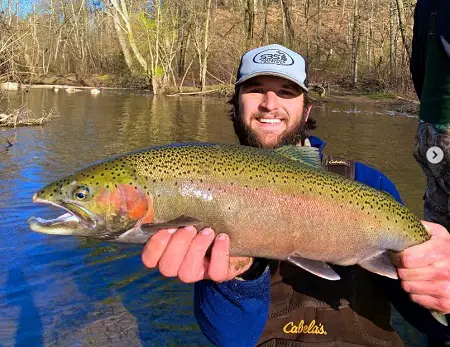
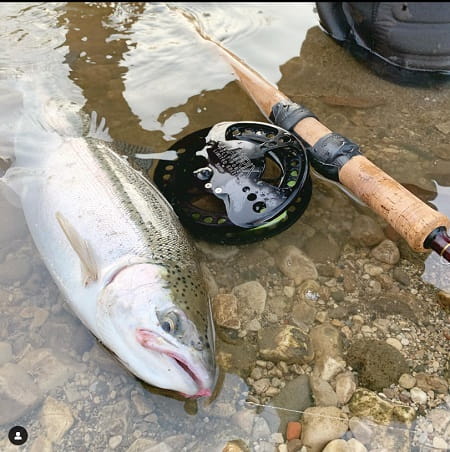
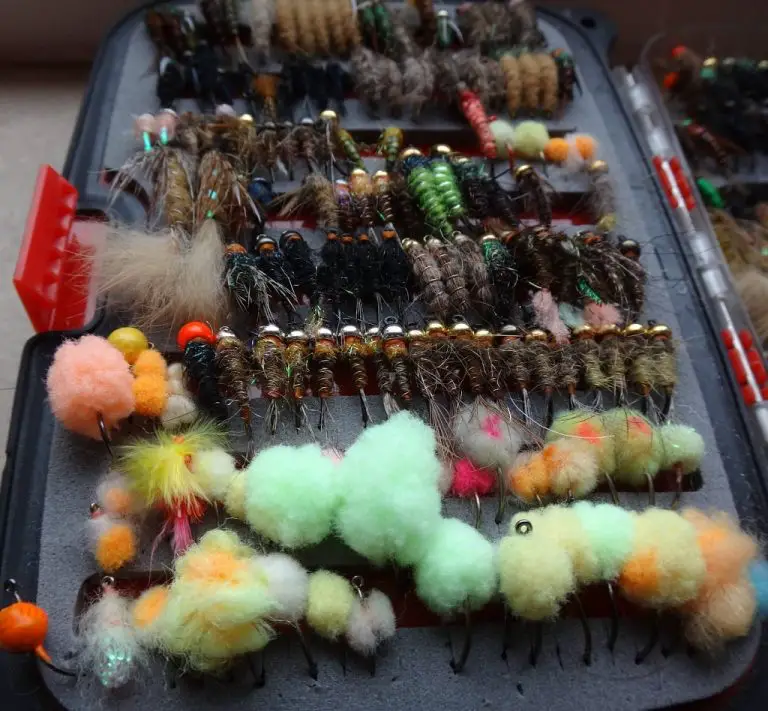
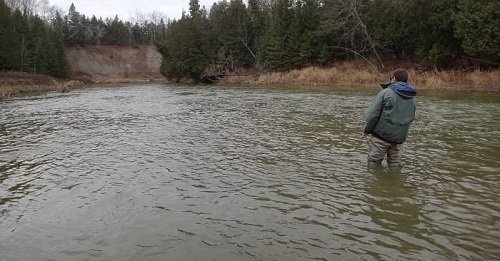

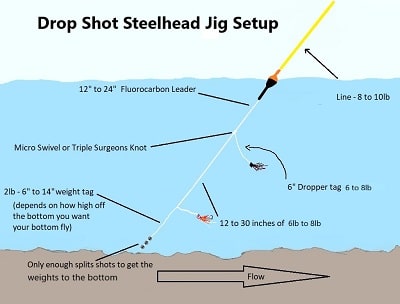
Hi Graham, Long rods are used for Steelhead Nymphing and I have a 9 ft 6 in fly rod and a 11 foot Noodle rod. I see no reason why I couldn’t use the Noodle rod and a spinning reel for Nymphing for Steelhead. I would just have to construct a Leader to use with the Nymphs. I doubt very much that the fish would know which rod I am using. I think the Leader would have to be fairly long.
Any comments?
Tony
Hey Tony, Nymphing with an 11-foot noodle rod is not a problem and can actually be very effective. Doing so would simply be what I know as Bottom bouncing or Drift Fishing for steelhead. Check out my advanced bottom bouncing method and leader to see how I do it. See it HERE
Graham,
Thanks for your articles. I do a lot of bottom bouncing in Michigan and started using sinking tips instead of droppers. It takes some trial and error and sometimes changing out the leader but once you get it figured out it almost eliminates getting hung up in the rocks. I get a nice drift and seam to be able to detect the bite a little easier. I like your idea of the sighter and will put it to work this year.
Keep your line tight!
Thanks for the input Cary, I do know guys that use sinking tips when fly fishing, and it’s sort of works OK, but I have never been able to catch more with this method for a few reasons.
I’m not sure how you actually do this with spinning gear, however, I think I understand your method, and I’m thinking that you are dragging your tips across the bottom instead of bouncing your weigths along the bottom, and if so then yes you would likely get hung up less and the tight line of the sink tips would help detect strikes better.
However, my biggest concern with that would be the potential for slack in the bottom part of the leader where your bait is, and not being able to know where your fly is at all times. If your tip is dragging slower than your bait and the bait happens to be downriver from your sink tip, there will be no strike detection at the moment the fish grabs the bait. This gives the fish time to spit the bait out without you ever knowing it is there.
Also, I would be concerned that if you run a very short tip off your sink tip it could spook fish.
I would also be concerned with a tip that is dragging across the bottom spooking other fish that are not in line with your bait. An example would be if you are fishing your bait 20 feet across the pool, the fish that are between you and the bait will be getting hit or spooked by the sink tip that runs between you and the bait. Does that make sense? If that’s the case you may be spooking a lot of fish that you might have otherwise been able to catch if you were using a straight up and down verticle presentation like you would get with a bait suspended from a float.
Maybe I’m not understanding you exactly… so, if it’s working for you and you have confidence in it then stick with it.
Graham